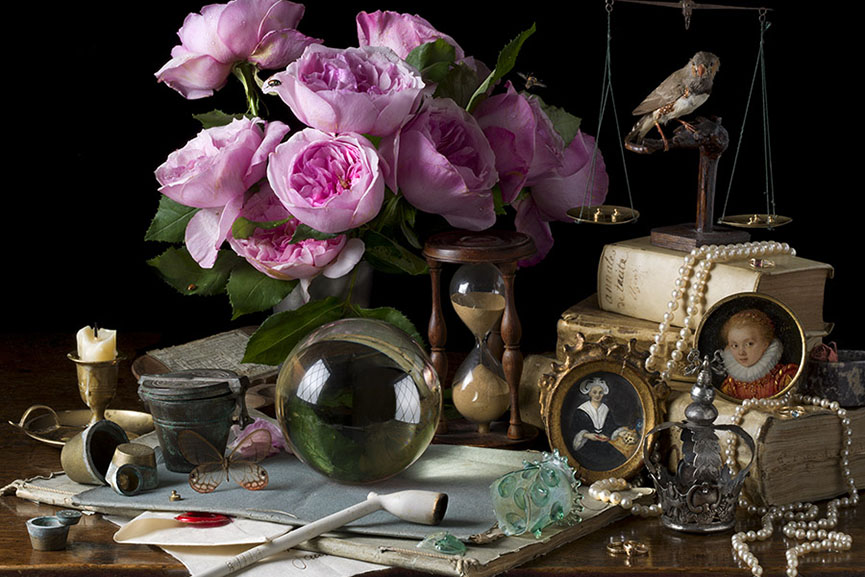Still Life
The term still life comes from the Dutch word ‘Stilleven’ in the 17th century, when the genre flourished in the fine art medium. Artists arranged significant objects and painted them and the genre was consolidated as one of the most popular.
Vanitas & Memento Mori

The above image is an example of Vanitas. A Vanitas is a piece of art full of symbols that represent the transience of life, the futility of pleasure, and the certainty of death, often contrasting symbols of wealth and death. The term derives from religious origins – in the first lines of the Book of Ecclesiastes; ‘Vanity of vanities, saith the Preacher, vanity of vanities, all is vanity.’ These works include imagery of material goods such as wine or musical instruments, to demonstrate the triviality and vanity of worldly belongings.

The above image is an example of Memento Mori, a Latin phrase meaning ‘remember you must die‘. It is a style of still life of which the purpose is to remind the viewer of the fragility of life and inevitability of death. These can include imagery of skulls or extinguished candles.
Of course, these are all examples of pieces of fine art, not photography. An example of Vanitas/Memento Mori in photography is the work of Paulette Tavormina, shown below, who was inspired by the work of 17th Century Old Masters.

Of course in the modern world of photography, we see that still life constantly has a place as a popular genre and here are some examples below.
Laura Letinsky

The work of Laura Letinsky is some I find particularly interesting. Through her images in this series, she creates a moment, an action, an interchange – all through careful arrangement of her subjects. I personally love this work because it creates a space for where there was clearly life previously.


Additionally, the abandonment of the articles within the images suggests symbols of rejection or perhaps the action of leaving things behind. This in itself directly links to the idea of Memento Mori photography – as the items have perhaps been left behind by someone who is no longer here to claim them.
Overall, I think it is clear that still life is always going to have a place in all different forms of art and creation, and so it should not be overlooked in its power to evoke emotion and thought through the use of symbolism.
